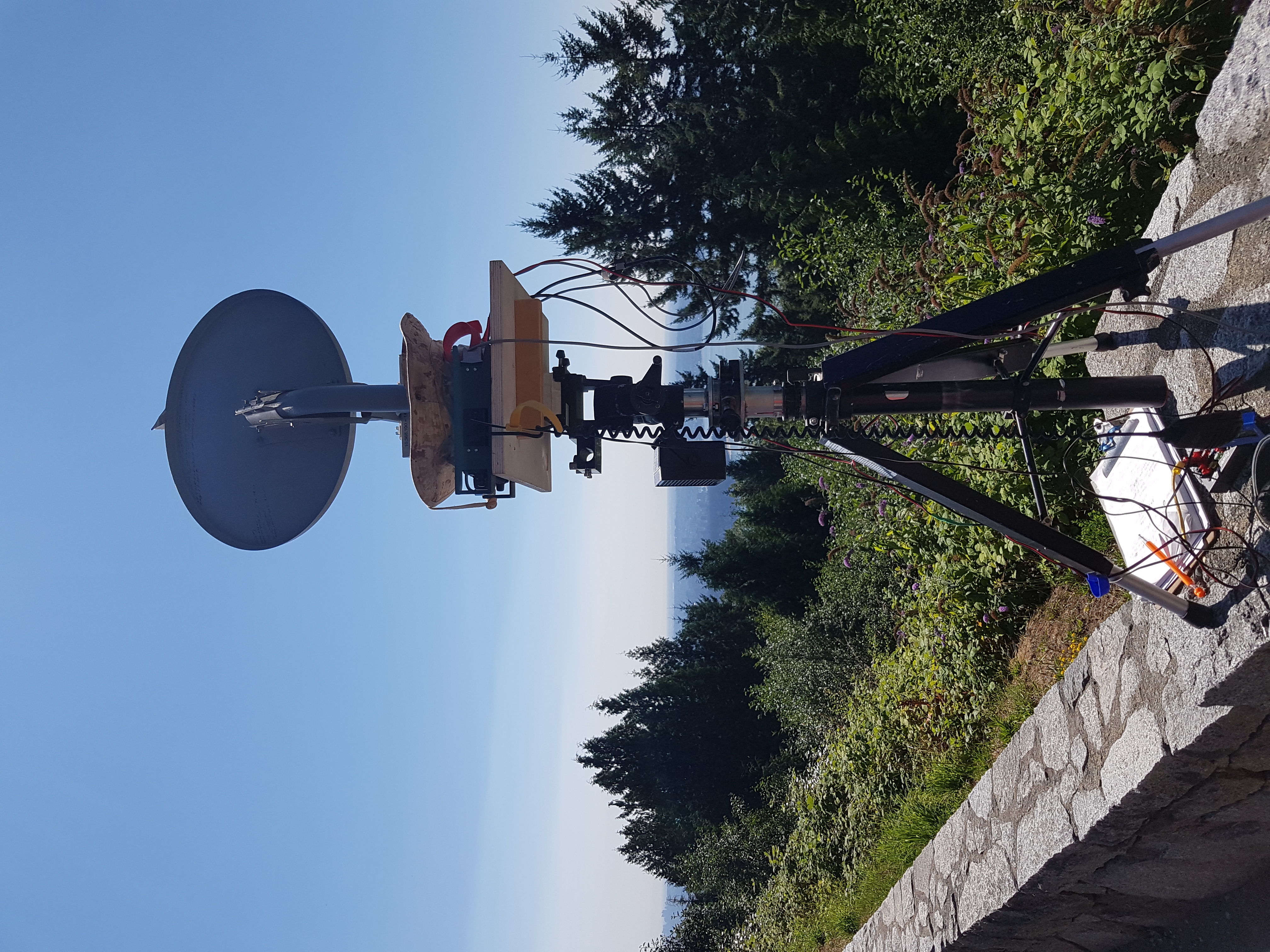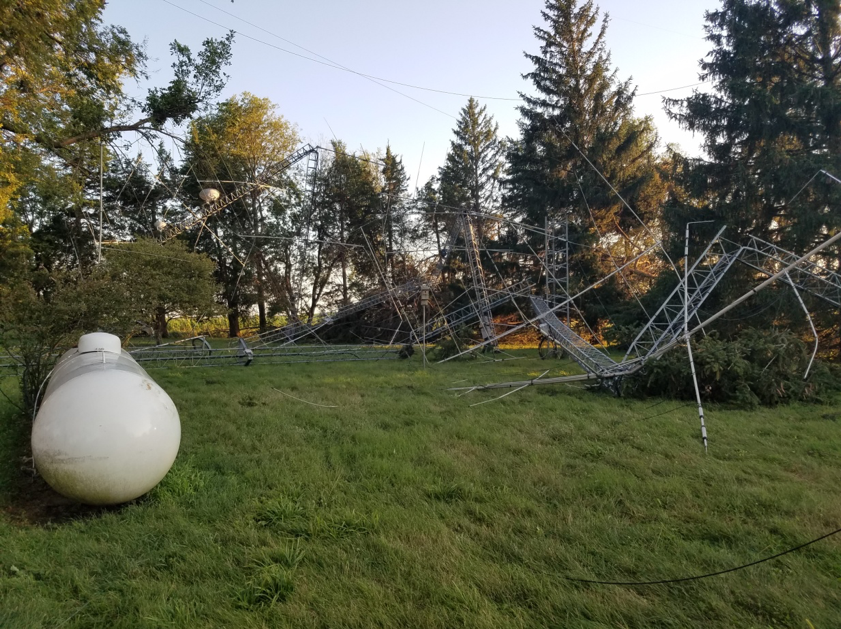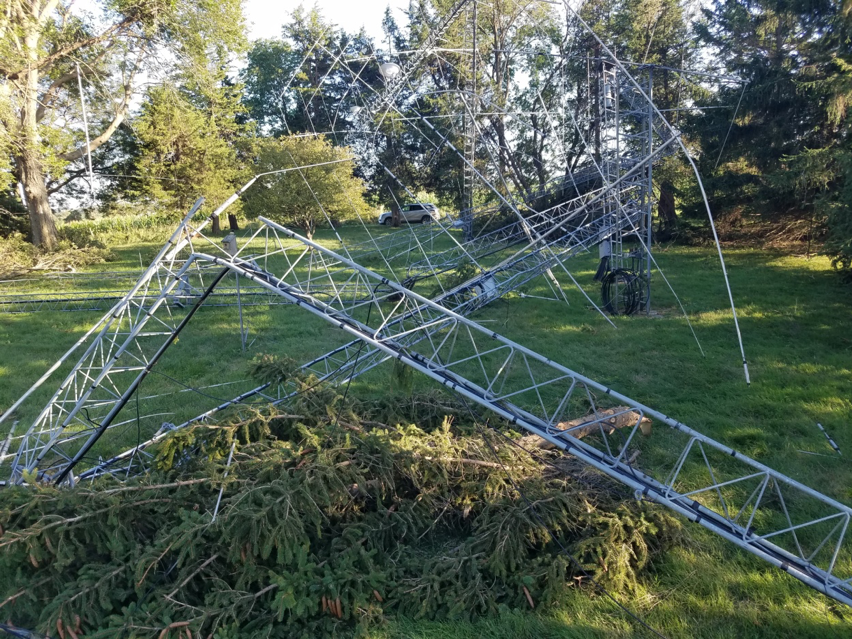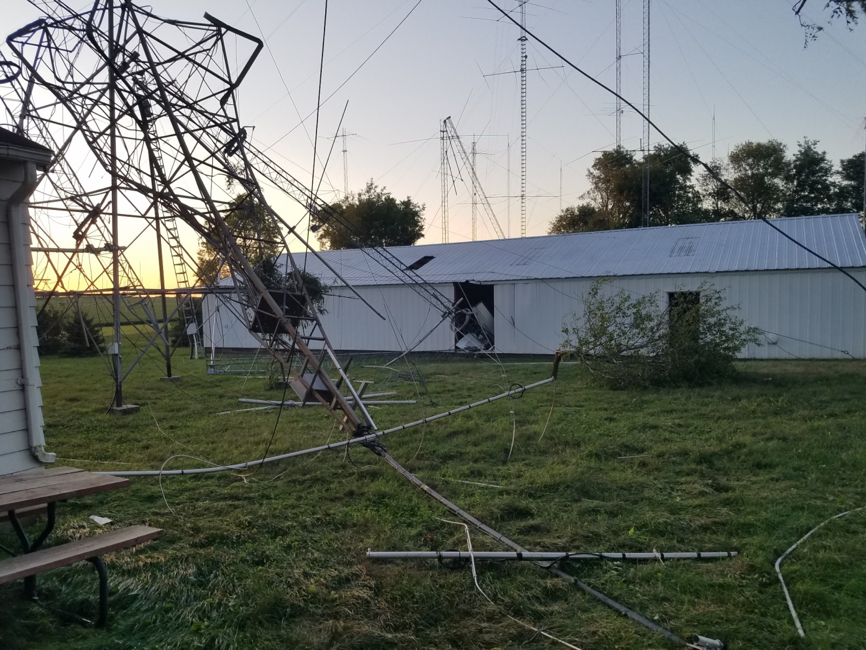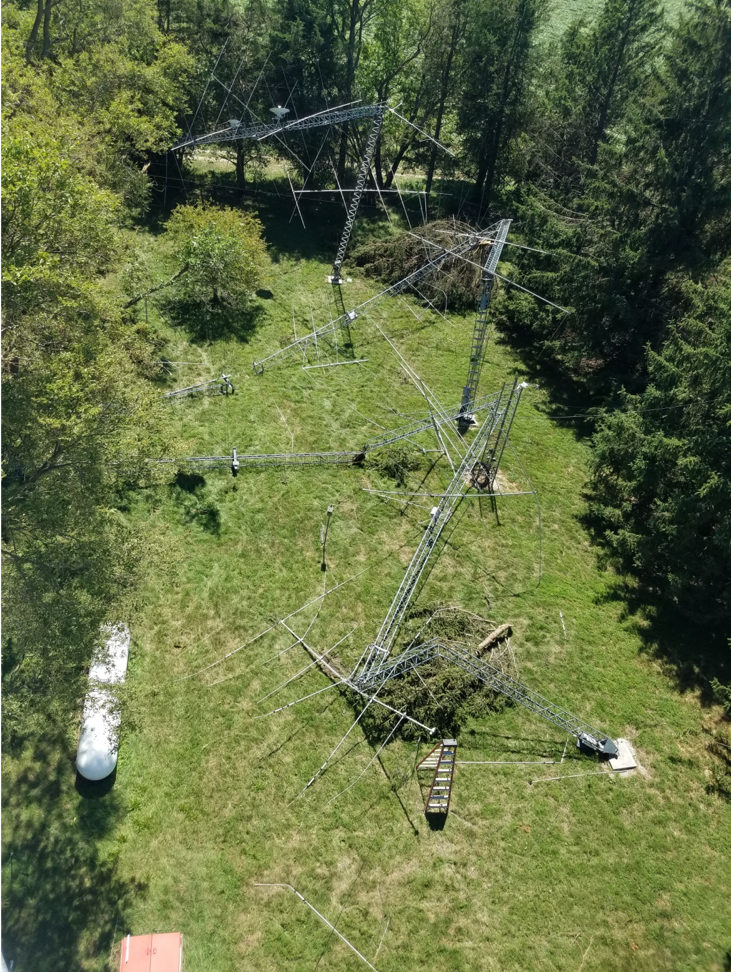 September 2, 2020 Editor: Paul Bourque, N1SFE | ||
IN THIS ISSUE
The fall contest season is nearly upon us! Over the next few weeks there are smaller-contest opportunities to try modes that might be new to you, or contest formats that are enjoyable. For those that enjoy modern digital contests, RTTY could be very appealing. Compared to today's FT4/FT8, contacts can proceed at a faster rate, but signals in general have to be stronger, and errors can occur in the decoding, since there's no inherent error correction. If you're already set up for FT4/FT8, you're probably also set up for RTTY. Check out RTTYContesting.com's Getting Started on RTTY page, and for even more information, review past presentations on Contest University's website. You'll probably also want to study up on the use of a logging program, such as N1MM Logger+, in conjunction with a RTTY program. The CQ WW Radio contest formats can be more than vestigial signal report and running, running, running. For example, Sprint contests have an explicit "must QSY" rule built in. You can read more about the Spring format at N6TR's Sprint Survival webpage, and then join in on CW on most Thursday evenings for the NCCC practice Sprints. The semi-yearly North American Sprint, CW, is the 0000-0400z September 13. See this issue's conversation section for additional impetus to try this one! The WAE contests have a "feature" that can add a lot of points - QTCs. Information from previous contacts are exchanged between stations to effectively increase scores. Many logging programs handle the housekeeping details for the sending, but you as an operator will have to correctly copy and enter QTC information into your logging program. Secret hint: some logging programs will screen-read RTTY and enter the QTC information, but the operator must still determine that the information being decoded is correct. The WAE SSB contest is on the weekend of September 12, why not give it a go? And if you enjoy RTTY and find that Sprints are exhilarating... there's the North American RTTY Sprint on September 20! Complete information for all contests follows the Conversation section 3 Sep - 16 Sep 2020 September 3 September 4 September 5
September 6 September 7 September 8 September 9 September 10 September 11 September 12
September 13 September 14 September 15 September 16 It's good practice to be aware of hurricane relief operations on our bands, and to stay well clear of the frequencies being used for this purpose during contests. In the September 2020 issue of the PVRC Newsletter, Tom, K3AJ, President of the Potomac Valley Radio Club, noted that there have been some upsides of social distancing: "All chapters have transitioned to on-line or on-the-air meetings with great results. Attendance has been very good, and we have found that many members are participating in chapter meetings far afield from their homes, making some new friends in new ways. Those members who live too far away or could otherwise not regularly participate in chapter meetings have become regulars." He also noted that "The real lifeblood of the club - on air contest participation -- has been strong!" The August 27 issue of the ARRL Letter profiles Dave Minster, NA2AA, the newly appointed CEO of the ARRL. "His background includes National Traffic System training and participation in public service events, as well as contesting from home, club stations, and contest stations in the Caribbean -- particularly on Bonaire, where he is a member of PJ4G." Dave "settled on the vanity call sign NA2AA in the 1990s as a way to honor a mentor, N2AA, and the contest station that he used to frequent, K2GL, in Tuxedo Park, New York." Dave is also a member of Frankford Radio Club. There's a new contest for portable operators, the Fox Mike Hotel Portable Operator's Challenge. The first outing will be October 3 and 4, and the spirit of the contest is extracting the maximum number of kilometers-per-watt. Though this contest has NCJ as one of the sponsors, it is not an official ARRL or NCJ contest. "According to the contest rules, scoring will be calculated using the distance between stations (Maidenhead grid squares) in kilometers divided by power output in watts. Fixed (QTH) stations will compete against portable (P) stations on 80, 40, 20, 15, and 10 meters. Allowable modes include phone, CW, and digital. For the 2020 event, the number of transmitters concurrently in use will be restricted to two." Last minute changes for the First Class CW Operators Club (FOC) QSO Party! The FOC QSO Party date has changed to September 12. The score reporting website has changed to focqp.g4foc.org. (Art, KZ5D) According to John, K1AR, CQWW Contest Director, there are some updates to the 2020 CQ World Wide contest rules. Among the changes are a renaming of the categories to align them with other CQ contests, inclusion of amplifiers in the 500-meter circle diameter for station locations, and the elimination of paper logs. According to John: "A complete listing of the 2020 rules has been posted at http://cqww.com/rules.htm. Updated translations for a variety of languages are also available." Chris, N6WM, writes: "The annual CQWW RTTY contest is approaching! The contest period runs September 26-27, 2020 0000-2359 UTC. We wanted to reach out in advance to all participants and encourage you to take photos and document your efforts. Rules records, and past results, certificates and more are available at the CQWW RTTY home page. Traditionally, this contest has encouraged travel to various destinations for many, but as we all know the new normal may prevent quite a bit of that this season, however I am sure you will all agree that RTTY is a uniquely good mode for remote operating, and with plenty of operators sheltered in place or operating from home, it is quite probable there could be record participation this year. The entire CQWW RTTY contest team asks all participants to adhere to the safety/medical recommendations of your respective countries/localities when planning your contest events. Let's work together to keep it safe and have some fun! -- Ed, W0YK; Rich, N1IXF; Chris, N6WM." The Oceania Contest is in its 75th year! "Once a year in October the global amateur radio community is presented with the opportunity to partake in one of the world's oldest radio contests, the Oceania DX contest. First established in 1934 and earlier known as the VK/ZL contest, it is one of the most prestigious on the contesting calendar. Mark the dates in October for both Phone & CW, note the new operating times and join us for an event you will long remember. PHONE: 0600 UTC Saturday October 3 to 0600 UTC Sunday October 4, 2020. CW: 0600 UTC Saturday October 10 to 0600 UTC Sunday October 11, 2020." This year's California QSO Party will be held 1600 UTC October 3, 2020 to 2200 UTC October 4, 2020. "The California QSO Party 2020 includes a special award that commemorates the Northern California Contest Club's 50th anniversary, while also celebrating California's state tree, the mighty Redwood. Here's how to get your colorful commemorative certificate:
Easy!" - John, K6MM, on behalf of the CQP 2020 Team Larry, K4AB, noted that Scott, K0MD, current editor of the National Contest Journal (NCJ), was interviewed on CNBC recently. Larry notes: "I'm gonna miss him as @EditorNcj Great job, Scott. Thanks and congratulations on both jobs." Lee, KY7M, will be taking the helm of NCJ starting in 2021. Bob, N7WY, commented on last issue's "Game Changers" Conversation: One of the recently displayed Mercedes hybrid concept cars employs graphene batteries. Supposedly graphene batteries are lighter and provide more capacity over time than do the Lithium ion batteries of today. The concept car has two modes of rear wheel steering, one to make tighter turns and one to facilitate parallel parking. Hopefully we will start seeing graphene batteries in widespread use soon as fabrication has less undesirable chemical by-products and they are not prone to breakdown and combusting." "WWROF Announces New Director, Philipp Springer, DK6SP; Long-Time Director, Dennis Motschenbacher, K7BV Steps Down" - Philipp is 22 years old, and has already been an amateur radio operator for 12 years! He's already participated in a WRTC, and is active in YOTA, among many other activities. Gore As it relates to high altitude balloon competitions: "A triangular or tapering piece of material used in making a garment, sail, or umbrella." Or a balloon.
Jim K1IR, presented "Amateur Radio Tower Safety" to the Western Washington DX Club (WWDXC), and also shared his presentation on YouTube. Editor's note: The August 10, 2020 derecho destroyed over 14 million acres of crops, leaving over 200,000 people without power. Here's the National Weather Service's take on the extent of the storm. What follows is a description of the impact to well-known contester Toni Radebaugh, N0NI. The August 2020 Midwest Derecho - by Mark Obermann, AG9A On August 10, 2020, a severe weather phenomenon known as a derecho developed over the Midwest, forming near the border of South Dakota and Nebraska. It traveled 770 miles at an average speed of 55 mph over five states before eventually dissipating over eastern Indiana and Ohio. Derecho means straight in Spanish and describes the fast moving and long lasting high straight-line speed wind storms that can generate hurricane force winds and produce tornados within the thunderstorms. While uncommon, they are generally most prevalent in the northern hemisphere during the months of June, July and August. Wide swaths of the Midwest were affected, but the most severe damage occurred in several different areas along its path. The highest estimated wind speeds reached 140 mph (equivalent to a Category 4 hurricane) and took place over Iowa. One of the amateur stations that sustained heavy damage was the contest station of Toni Radebaugh, N0NI, located near Rippey, Iowa. The weather forecast for that day included a 30 percent chance of rain with no mention of severe storms. The storm arrived at around 11 AM. In the roughly 30-40 minutes that followed, ten towers were either lost or severely damaged affecting a total of thirty-five HF Yagis. With area winds estimated in excess of 100 mph, many trees, including seventeen 100-year-old cedars on the west side of the towers (and just out of view in the photos) snapped and landed on multiple guy wires. This caused the towers to bend and break, bringing down the towers, antennas and other nearby towers that may have been in the way. The towers and antennas outside of the tree line were not affected, including a homebrew full-size 3-element 40 meter Yagi at 196', a real testament to the robust design of the towers and antennas at Toni's station. Toni stated that he had not lost a tower in 43 years, but when he finally did, it was spectacular. In addition to the tower damage, trees came down on the house and the surrounding corn fields were crushed by the winds resulting in a total loss of much of this year's crop. Toni vows to rebuild a number of towers and antennas as that is his favorite thing to do in Amateur Radio. This time, they may not go up as high, and of course, they'll be spaced farther away from the remaining trees.
Ed, N4II, writes: "I noted with interest the item on setting distance records using light wavelengths in the August 19, 2020 Contest Update, and wanted to share the modulatedlight.org website which, even though it hasn't been recently updated, has much information on both coherent light (laser) and noncoherent light (LED) amateur communication, in both Australia and the U.S." FT4/FT8 Operating Tips It's a little late for this year's contest, as the World Wide Digi DX Contest was last weekend, but the FT4/FT8 Operating Tips are relevant for any contest employing these modes, especially the section on minimizing NILs. "Starting with N1MM Logger+ revision 1.0.8519, the Cabrillo format is 3.0 for all contests." Tom, N1MM, posting in the N1MM Logger+ group. Producing technical presentations in a live-stream format can be challenging - sometimes there are explanatory head shots, occasional close-ups of circuitry, computer screen captures. All of that can be a lot to manage while effectively presenting on a particular topic. Jeff Glass, KK9JEF, has produced 22 "Electronics Class" sessions since March, and he shares his setup and experiential learning in this blog post. He covers it all: content development, cameras, lighting, controls, even background music. (Jeremy, KF7IJZ via Twitter) USB connectors seem to have evolved into the universal charger for most small electronic devices, but the version we're used to, USB-A or USB-B, has four conductors: two for data, two for power. Five volts is all you get, with up to 2 amps of current, depending on the host. The newer USB-C standard has much more functionality, and potential for up to 20 volts and 5 amps of power! With that comes the necessary complexity to negotiate for the power level you need. Tindie's recent blog post discusses a USB-C Power Delivery breakout board that incorporates a port controller chip to do proper USB-C power negotiation. A capstan winch uses a drum and rope to exert a pulling force on a load by controlling the friction of the pulling line against the drum. The manual that comes with this portable gasoline powered capstan winch provides information on how to use it in various scenarios, but this type of winch is specifically NOT intended to lift loads vertically. Joe, KO8V, provided some knotty advice on the Towertalk email reflector on how to tie two ropes together: "There's a great app for the Apple iOS and Android platforms called Knots 3D. Gives a 3D rendering of how to tie a knot as well as information about strength, ability to untie, use, etc. The website is knots3d.com. For joining two ropes, I've used the Ashely bend. Works great and has shown no slippage." @LukeWeston puts SMD LEDs on a mirror to observe the orientation marking on the underside before picking, placing, and soldering by hand. Having Fun in the North American CW Sprint By Ward Silver, N0AX NA CW Sprint - 20, 40, and 80 meters - 0000-0359 UTC on September 13 (Saturday evening in NA) There have been some very good CW contests this summer, beginning with the multi-mode IARU HF Championship in July and August brings the NCJ-sponsored NA QSO Party. Every week there are three one-hour CWops-sponsored CWT sessions on Wednesday and a 30-minute NS Sprint practice session on Thursday night (in North America). Coming up on September 5 is the CW Open -- another CW Ops sponsored contest -- with three 4-hour sessions. But wait, there's more! If you haven't yet tried the NA CW Sprint, it's a natural neighbor of the NAQP CW and CWT contests. (Rules and schedules are found here.) CW Sprint can seem intimidating, particularly the first couple of times with its loud signals and high code speed, but there are some "secrets" to getting the hang of things. Once you know them, you'll have a lot more fun! First, CW Sprint has a special and unique "QSY rule" that rewards agility as much as signal strength. No sitting on one frequency! Medium guns and little pistols can make that work in their favor. Here's how it works:
What that means is there are a LOT of stations tuning for CQ-ers: Find a frequency, call CQ, make a QSO, then move. Calling CQ at a comfortable speed is less stressful than full-speed operating, send "QRS" if needed. Set your A and B VFOs 5 to 10 kHz apart and jump between them or use alternate bands. After you work a CQing station, remember that other stations will try to call you afterwards, so be prepared to receive a call sign. If you don't get called, start your own CQ. Since most activity migrates from 20 to 40 to 80 meters, 40 meters is a little less busy at the beginning and a good place to get into the rhythm, particularly if you are uncomfortable with the hurly-burly at the start. 20 meters can produce QSOs late in the contest, too. You can work stations on all three bands, so stations will be active on all three bands. You can also tune around, responding to CQs or calling stations inheriting a frequency. But how do you know which station to call? Since all exchanges must include BOTH call signs, the secret is knowing WHERE to place your call sign in the exchange. This single bit of information makes CW Sprint a whole lot easier. If you are going to leave the frequency after the QSO, send your call sign at the beginning of the exchange, like this: Step 1 - NØAX: CQ NA NØAX NØAX If I hear a station ending an exchange with a call sign as in Step 4, I know that station will inherit the frequency and I can send my call to work them. If I hear an exchange end without a call sign as in Step 3, I know the QSO is only half over. I can wait and call the responding station or I can go tune for another station. (It can help at first to have your logging software programmed with one CW message to send Step 3 and another to send Step 4. You can get fancy with the macros later.) Two other "Sprint secrets" are helpful:
Would you like to listen to examples? N6TR, a regular top finisher, has prepared a "Sprint Survival Page." Look for the section "CW Sprint QSO Example." Tree explains a number of ways to have a good time in the CW Sprint. Jim N3BB also wrote a February 2019 QST article about NA Sprint. Why not jump in there and try? As the Great Gretsky says, "100 percent of the shots you don't take don't go in!" Get your feet wet with a CWT and NS Sprint session during the week and then give it a go on Saturday - we'll be glad to see you, fast or slow. That's all for this time. Remember to send contesting related stories, book reviews, tips, techniques, press releases, errata, schematics, club information, pictures, stories, blog links, and predictions to contest-update@arrl.org 73, Brian N9ADG 3 Sep - 16 Sep 2020 An expanded, downloadable version of QST's Contest Corral is available as a PDF. Check the sponsors' website for information on operating time restrictions and other instructions. HF CONTESTS CWops Mini-CWT Test, Sep 3, 0300z to Sep 3, 0400z; CW; Bands: 160, 80, 40, 20, 15, 10m; Member: Name + Member No., non-Member: Name + (state/province/country); Logs due: September 5. VHF+ CONTESTS IARU Region 1 145 MHz Contest, Sep 5, 1400z to Sep 6, 1400z; All; Bands: 145 MHz; RS(T) + QSO No. + 6-character grid square; Logs due: September 14. WAB 144 MHz QRO Phone, Sep 6, 1000z to Sep 6, 1400z; SSB; Bands: 2m Only; British Isles: RS + serial no. + WAB square, Other: RS + serial no. + country; Logs due: September 16. ARRL EME Contest, Sep 12, 0000z to Sep 13, 2359z; CW, Phone, Digital; Bands: 50 MHz and up; Signal report; Logs due: December 29. Also, see Worldwide Sideband Activity Contest, SKCC Weekend Sprintathon, FOC QSO Party, NCCC Sprint Ladder, MI QRP Labor Day CW Sprint, Tennessee QSO Party, SKCC Sprint Europe, Colorado QSO Party, Texas QSO Party above. 3 Sep - 16 Sep 2020 September 3, 2020 September 4, 2020 September 5, 2020 September 6, 2020 September 7, 2020 September 8, 2020 September 9, 2020 September 10, 2020 September 11, 2020
September 12, 2020 September 13, 2020
September 14, 2020 September 15, 2020 September 16, 2020 ARRL Information Click here to advertise in this newsletter, space subject to availability. Your One-Stop Resource for Amateur Radio News and Information ARRL membership includes a choice of one print magazine: QST, the monthly membership journal, or On the Air, ARRL's new bimonthly publication for beginner and intermediate hams. All ARRL members can access all four ARRL magazines -- QST, On the Air, NCJ, and QEX - digitally. Subscribe to NCJ - the National Contest Journal. Published bimonthly, features articles by top contesters, letters, hints, statistics, scores, NA Sprint and QSO Parties. Subscribe to QEX - A Forum for Communications Experimenters. Published bimonthly, features technical articles, construction projects, columns and other items of interest to radio amateurs and communications professionals. Free of charge to ARRL members: Subscribe to The ARRL Letter (weekly digest of news and information), the ARES E-Letter (monthly public service and emergency communications news), Division and Section news -- and much more! ARRL offers a wide array of products to enhance your enjoyment of Amateur Radio. Visit the site often for new publications, specials and sales. Donate to the fund of your choice -- support programs not funded by member dues! Reprint permission can be obtained by sending email to permission@arrl.org with a description of the material and the reprint publication. ACKNOWLEDGEMENTS ARRL Contest Update wishes to acknowledge information from WA7BNM's Contest Calendar and SM3CER's Contest Calendar. | ||
